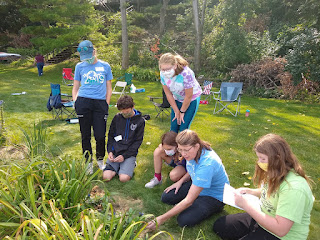Positive youth development is all about helping youth learn from their experiences, and providing them with new experiences to learn from. And what better way to bring this learning about than through experiential learning itself? From John Dewey’s Experience and Education (1938), to David Kolb’s interpretation of Dewey’s and others’ theories in Experiential Learning (1984), the approach of experiential learning has long been a staple in both adult education and the field of youth development. But it’s still my own go-to approach to teaching because I believe that done right, experiential learning is an effective way to bring out the joy and satisfaction of learning. But what do I mean “done right?”
It’s important to understand that experiential learning is not just a hands-on approach. For one thing, a learning experience doesn’t always mean physically using your hands. Learning can be just as fun and effective if you’re having an engaging discussion as it is if you’re playing a game or making muffins. On the flip side, one of these experiences can feel as empty as the other if we don’t engage ourselves in some thought and action to help bring out the learning.
It’s also important to understand that experiential learning is all about making connections. The facilitator’s job is to help the learner make these connections. If we don’t do this, we’ve failed at our job, and the learner is on their own to make their own connections…or not. Here’s what I mean.
Experiential learning begins with an experience. In the context of teaching, this means two things. First, and most importantly, it involves the learner’s previous experience with whatever is intending to be taught. Second, it involves the topic at hand. Our previous experience with a topic is important, because it’s through our connections with past experiences that we find the context for building new ones. If we make these connections, the learning can stick. If we fail to make these connections, we’re likely to forget the experience and not get much out of it. Connecting a new activity to past experiences also makes the new experience more engaging for the learner.
Once learners have made a connection to past experiences and are into the activity at hand, they need to reflect on the experience as it’s happening. Reflection involves sharing the results and our reactions to the experience with others. This creates further connection as we learn from each other through our various observations and perspectives. This sharing helps us process the experience so that we can see any discrepancies between our understanding and the experience itself. We can figure out what’s working and what’s not, ask questions about what we don’t understand or don’t feel good about, and begin to gain new ideas and inspiration (new connections) about the topic.
We continue to help the learner make connections by helping them generalize the experience—to put it into context with world around them. Where else have you experienced this/seen it/known this to be true? If not from your own knowledge or experience, what’s the potential? This stage of the learning cycle can often be the most exciting, because it’s where the learner starts to wonder and predict, see and understand how the topic connects or could connect to their understanding of the world. And finally, the learner needs to be able to apply what they’ve learned, to try out their new knowledge. This is the ultimate state of connection for the learner and when the learning comes to light and becomes part of their overall experience. It’s also where they often form new questions, which can lead to new experiences as they strive to find answers.
How to put all this into practice is a topic for another blog post. For now, I’m interested to know what part of this have you not contemplated before? What would you add to the discussion about what effective experiential learning is?
You are welcome to comment on this blog post. We encourage civil discourse, including spirited disagreement. We will delete comments that contain profanity, pornography or hate speech--any remarks that attack or demean people because of their sex, race, ethnic group, etc.--as well as spam.

Comments
Post a Comment